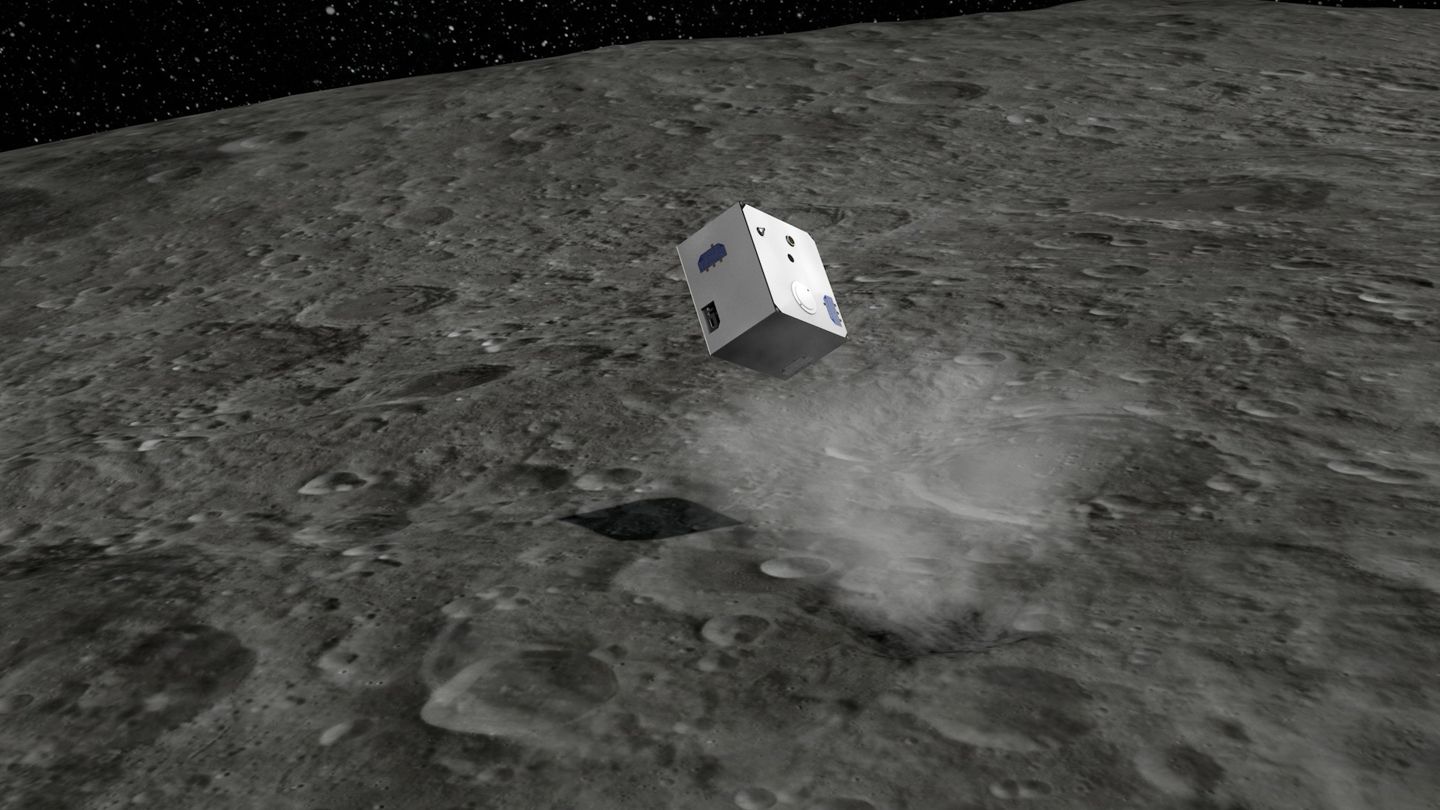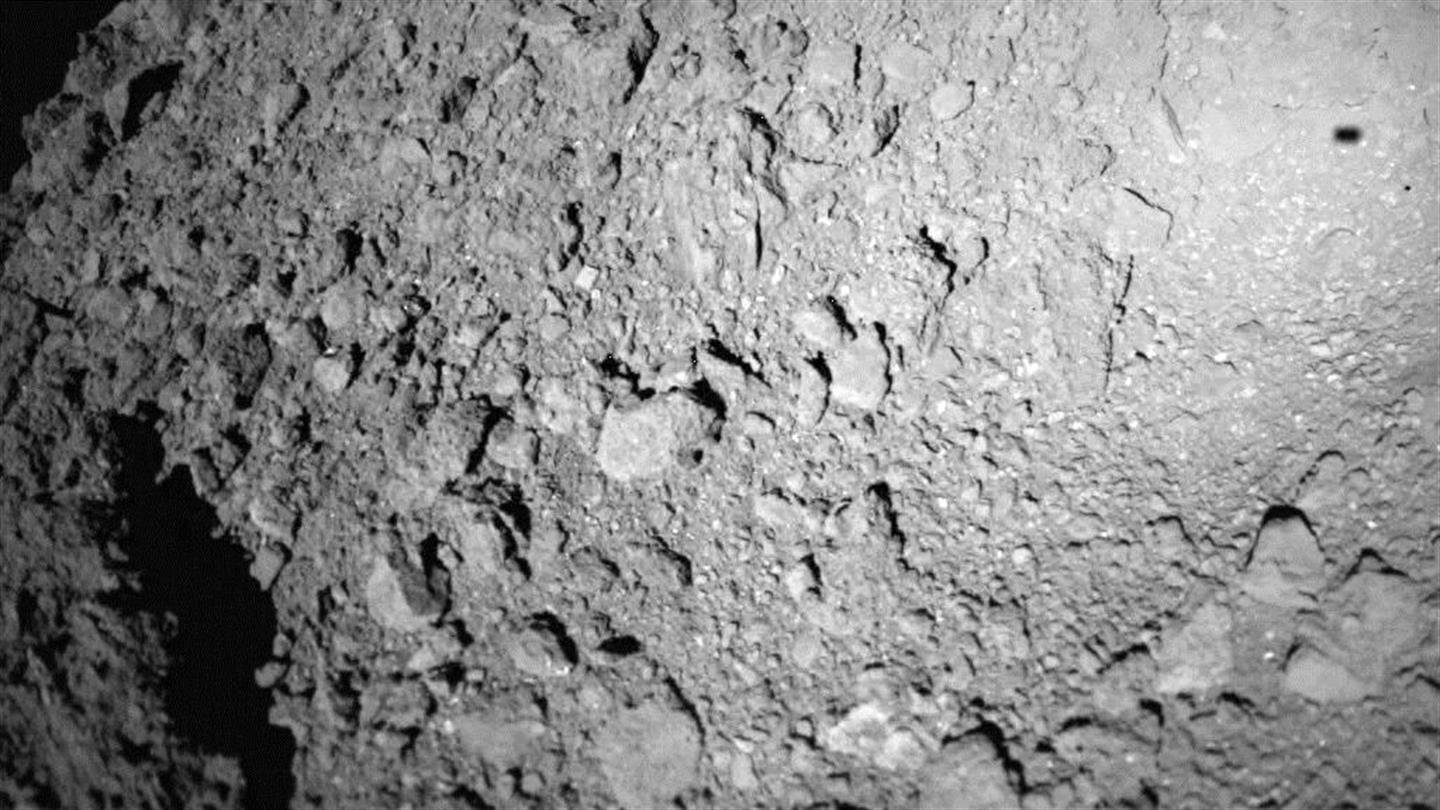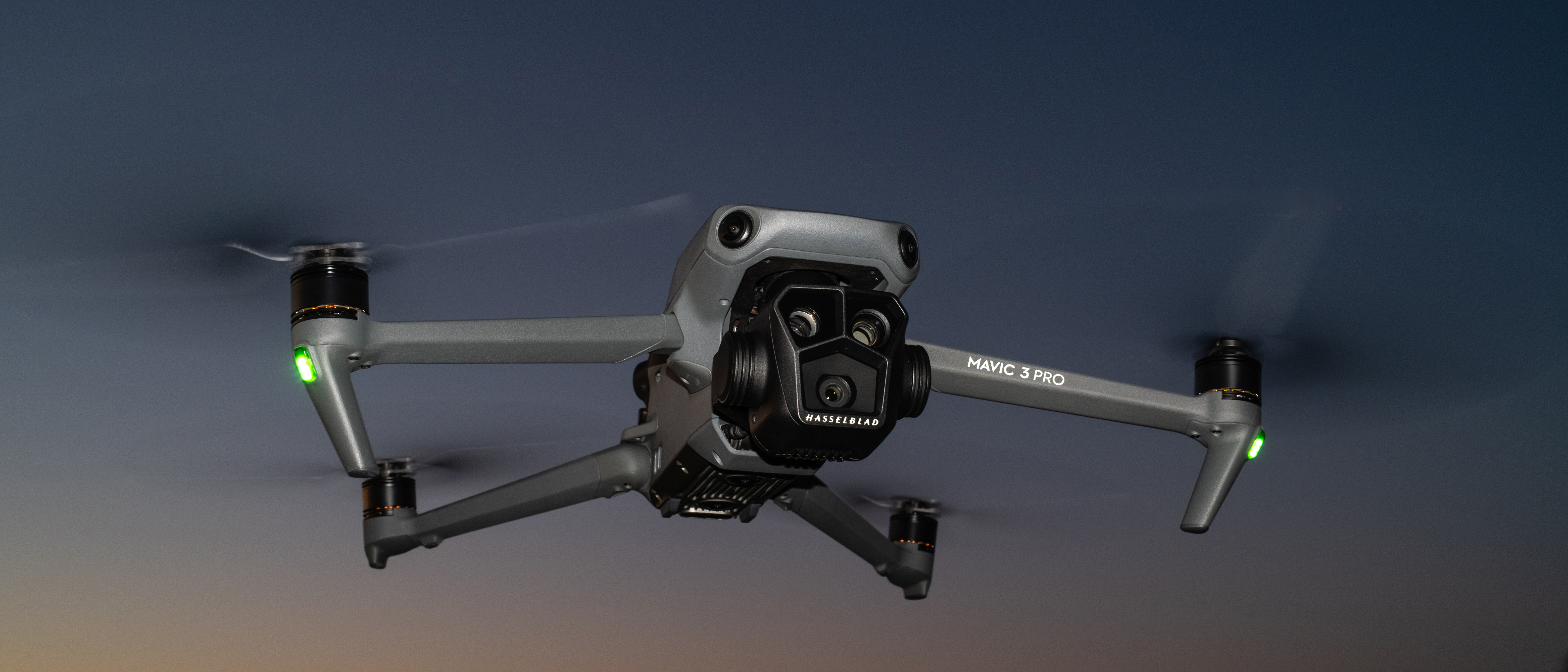
The MASCOT asteroid lander lived fast and died young, as planned.
The shoebox-size, hopping robot, which touched down on the 3,000-foot-wide (900 meters) asteroid Ryugu Tuesday night (Oct. 2), has given up the ghost, mission team members announced this morning (Oct. 4).
That seems pretty quick, but MASCOT's non-rechargeable lithium-ion battery actually lasted a bit longer than the expected 16 hours. [Japan's Hayabusa2 Asteroid Ryugu Mission in Pictures]
"All done with work! Oh my ... can that be right? I explored Ryugu for more than 17 hours. That is more than my team expected. Do I get paid overtime for this? #asteroidlanding," MASCOT said (via mission team members) on Twitter this morning.
"And during this extra time, I also made another hop and explored part of a third asteroid day! But the best thing is: I sent ALL the data I collected to @haya2kun! Now, team, it's up to YOU to understand Ryugu. #AsteroidLanding," MASCOT added in another tweet.
"@haya2kun" refers to MASCOT's mothership, the Japanese spacecraft Hayabusa2, which arrived in orbit around Ryugu in late June. (And about that "third asteroid day" business — the space rock completes one rotation every 7.5 hours.)
Hayabusa2 deployed two tiny, solar-powered hoppers called MINERVA-II1A and MINERVA-II1B onto Ryugu's rugged surface on Sept. 21; this duo remains active on the asteroid today. Then came MASCOT, which was built by the German Aerospace Center, known by the German acronym DLR, in collaboration with the French space agency, CNES.
Breaking space news, the latest updates on rocket launches, skywatching events and more!
The 22-lb. (10 kilograms) MASCOT carried four instruments: a camera, a spectrometer, a magnetometer and a radiometer. So, the lander probably beamed a lot of data up to Hayabusa2, and this info will presumably make it back to Earth soon. (Some of the data has already returned, in fact; the MASCOT team made public a photo that the lander snapped of Ryugu while descending toward the asteroid.)

Wheels are useless on an extremely low-gravity body such as Ryugu; a robot would float off the surface as soon as the tires started turning, Japan Aerospace Exploration Agency (JAXA) officials have said. So, the Ryugu robots were all designed to hop. MASCOT did this by manipulating a metal "swing arm" inside its boxy body.
We could see one more hopper deploy from Hayabusa2: The orbiter also carries an "optional" explorer called MINERVA-II2, which is about the same size as the 2.4-lb. (1.1 kg) MINERVA-II1 duo. MINERVA-II2 was built by a consortium of Japanese universities; the MINERVA-II1 pair were provided by JAXA and the University of Aizu.
And the mothership itself will venture down to Ryugu's surface next year. The craft will do this to grab a sample of the space rock, which will come to Earth in a return capsule in December of 2020, if all goes according to plan.
The data gathered by Hayabusa2 and its piggyback hoppers should help scientists better understand the solar system's early days and the role carbon-rich asteroids such as Ryugu may have played in life's long-ago emergence on Earth, mission officials have said.
The $150 million Hayabusa2 mission launched in December of 2014.
The original Hayabusa spacecraft visited the stony asteroid Itokawa in 2005 and succeeded in returning a tiny sample of that space rock to Earth in 2010.
The first Hayabusa carried a hopper called MINERVA ("Micro Nano Experimental Robot Vehicle for Asteroid"). But that MINERVA did not succeed in its Itokawa touchdown attempt.
Mike Wall's book about the search for alien life, "Out There," will be published on Nov. 13. Follow him on Twitter @michaeldwall and Google+. Follow us @Spacedotcom, Facebook or Google+. Originally published on Space.com.
Join our Space Forums to keep talking space on the latest missions, night sky and more! And if you have a news tip, correction or comment, let us know at: community@space.com.

Michael Wall is a Senior Space Writer with Space.com and joined the team in 2010. He primarily covers exoplanets, spaceflight and military space, but has been known to dabble in the space art beat. His book about the search for alien life, "Out There," was published on Nov. 13, 2018. Before becoming a science writer, Michael worked as a herpetologist and wildlife biologist. He has a Ph.D. in evolutionary biology from the University of Sydney, Australia, a bachelor's degree from the University of Arizona, and a graduate certificate in science writing from the University of California, Santa Cruz. To find out what his latest project is, you can follow Michael on Twitter.
